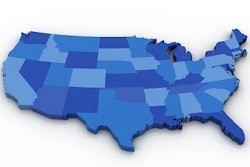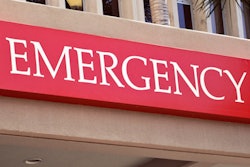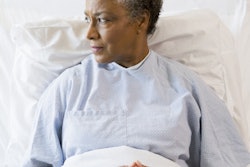
Nearly half of women who visit non-primary care centers such as emergency departments are not up-to-date on mammography screening, according to research published July 7 in the Journal of the American College of Radiology.
A team led by Johanna Poterala, MD, from the University of Wisconsin in Madison also found that most women receiving care at sites other than their primary care provider's office who did not have mammography screening in the past year were from historically underserved groups.
"Non-primary care-based visits may represent important opportunities to improve breast screening rates through patient education and targeted interventions," Poterala and co-authors wrote.
While annual breast cancer screening is recommended by many professional societies, disparities exist that prevent access to mammography screening. A 2019 report indicated that about two in three women aged 40 and over have had a mammogram within the past year.
Outreach efforts to improve screening usually consist of collaborating with primary care providers. But lack of access to a primary care provider plays a huge role in nonadherence with routine mammography -- which is why, when women use urgent and emergency healthcare services for nonemergent healthcare needs, there may be an opportunity to encourage them to undergo screening mammography, according to the investigators.
Poterala and colleagues sought to determine the proportion of women who were not up-to-date with recommended mammography screening on presentation at a non-primary-care center and to evaluate the potential impact of breast cancer screening interventions in these settings.
Using survey data from the 2019 National Health Interview Survey, the researchers included information from 9,139 women between the ages of 40 and 74 who did not have a history of breast cancer.
They found that of these respondents, 44.9% of women did not report undergoing mammography screening within the last year. Of these, 29.2% reported having visited an urgent care center, 21.8% having visited an emergency room, and 9.6% having been hospitalized within the last year.
The team also stratified data for women who did not receive screening by racial and ethnic groups, finding that 32.3% of Black women and 23.6% of Hispanic women reported visiting an emergency room.
The researchers highlighted the following findings (all of which were statistically significant):
- Black women were found to be more likely than white women to report undergoing mammography screening, with an odds ratio (OR) of 2.16 (with 1 as reference).
- Women with a college-level education who visited an urgent care center were more likely than those without to report undergoing mammography screening, with an OR of 1.38.
- Uninsured women visiting urgent care centers were less likely to report undergoing mammography screening, with an OR of 0.33.
- Women with higher incomes who visited urgent care centers were more likely to report undergoing mammography screening, with an OR of 1.03.
The study results confirm the presence of health disparities in breast cancer screening and prevention, and they suggest that non-primary care sites could be access points for breast cancer screening engagement and could improve screening rates among underserved populations, the authors wrote.
"Our dataset demonstrated hospital encounters represent an important opportunity to identify and improve screening rates in at-risk populations through innovative initiatives once women are identified as not being up-to-date with screening," they concluded.
The entire study can be found here.




















